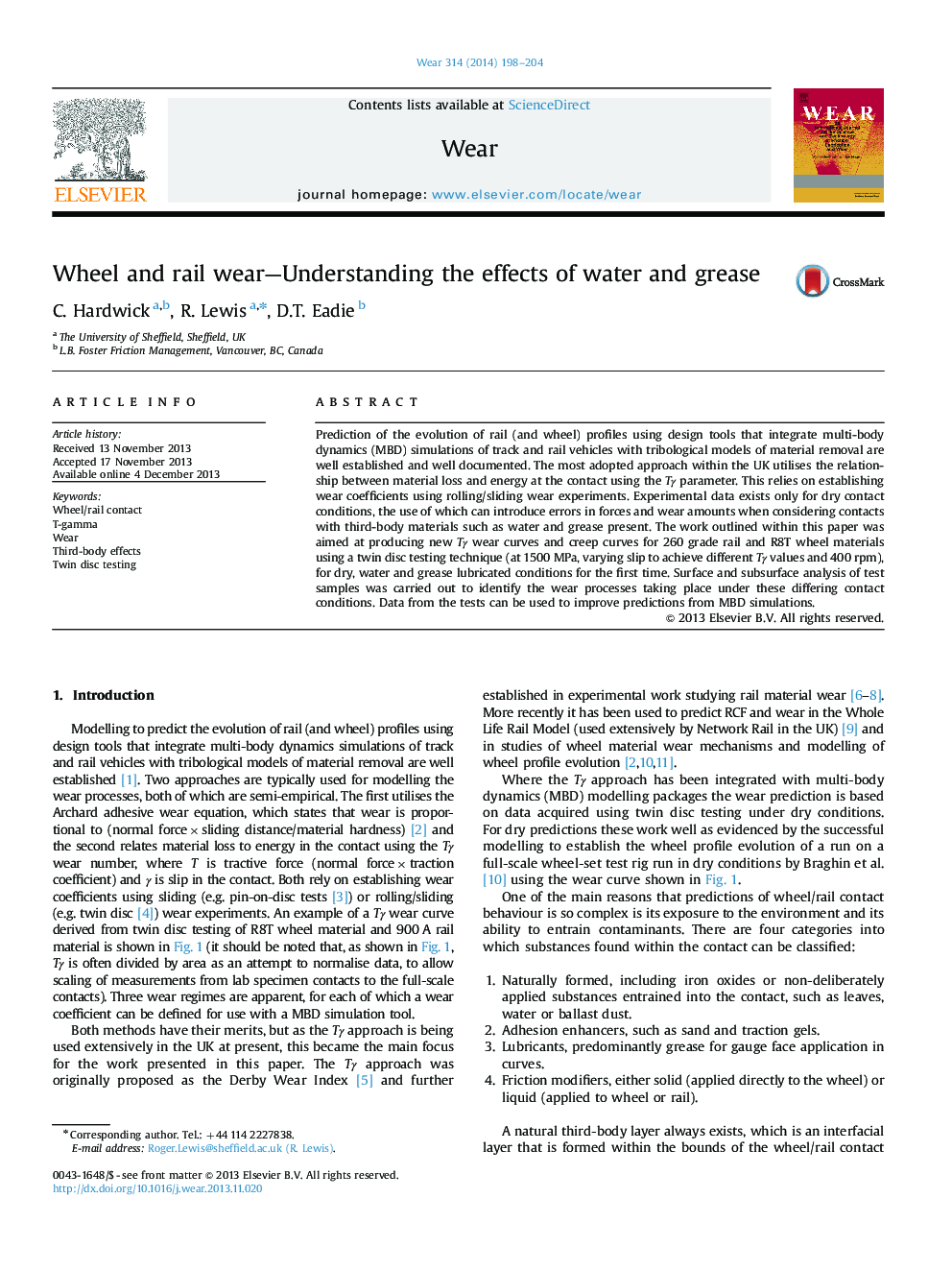| Article ID | Journal | Published Year | Pages | File Type |
|---|---|---|---|---|
| 617322 | Wear | 2014 | 7 Pages |
•Data gathered across a range of contact conditions for products applied to or found in the wheel/rail contact.•New understanding of wear mechanisms with products applied.•Wear coefficients determined that can be used to improve wear predictions in, for example, multi-body dynamics simulations.
Prediction of the evolution of rail (and wheel) profiles using design tools that integrate multi-body dynamics (MBD) simulations of track and rail vehicles with tribological models of material removal are well established and well documented. The most adopted approach within the UK utilises the relationship between material loss and energy at the contact using the Tγ parameter. This relies on establishing wear coefficients using rolling/sliding wear experiments. Experimental data exists only for dry contact conditions, the use of which can introduce errors in forces and wear amounts when considering contacts with third-body materials such as water and grease present. The work outlined within this paper was aimed at producing new Tγ wear curves and creep curves for 260 grade rail and R8T wheel materials using a twin disc testing technique (at 1500 MPa, varying slip to achieve different Tγ values and 400 rpm), for dry, water and grease lubricated conditions for the first time. Surface and subsurface analysis of test samples was carried out to identify the wear processes taking place under these differing contact conditions. Data from the tests can be used to improve predictions from MBD simulations.
